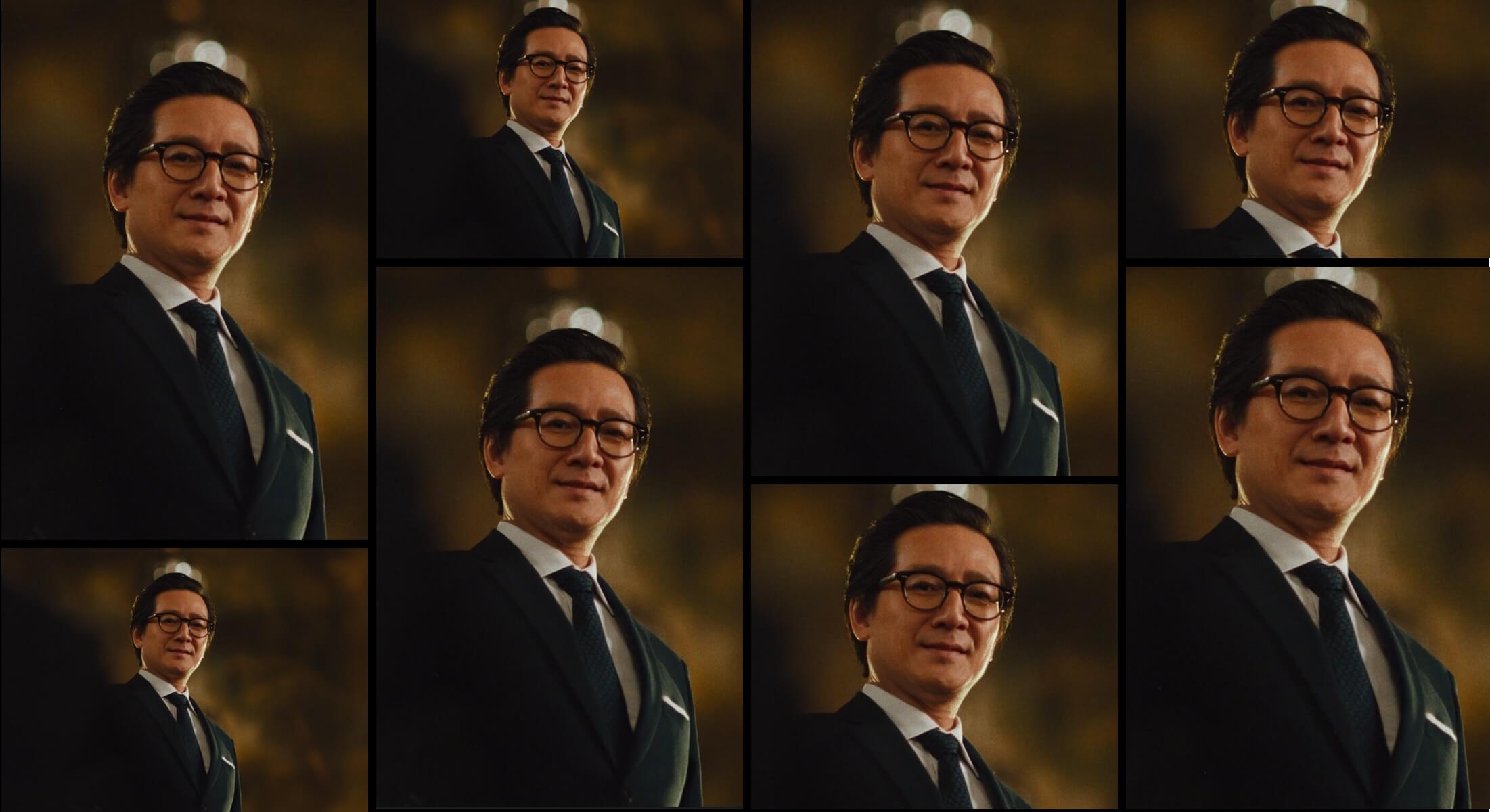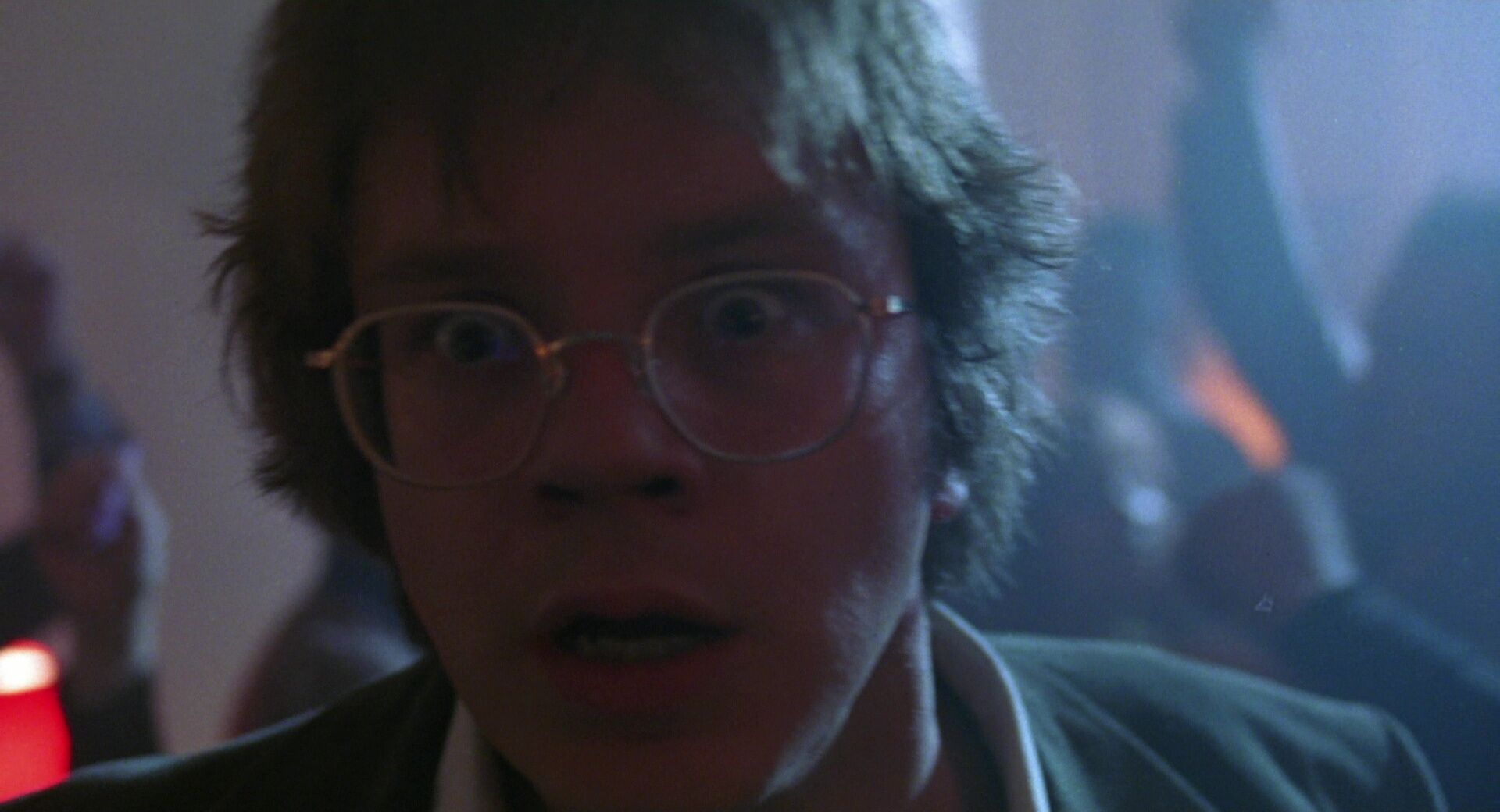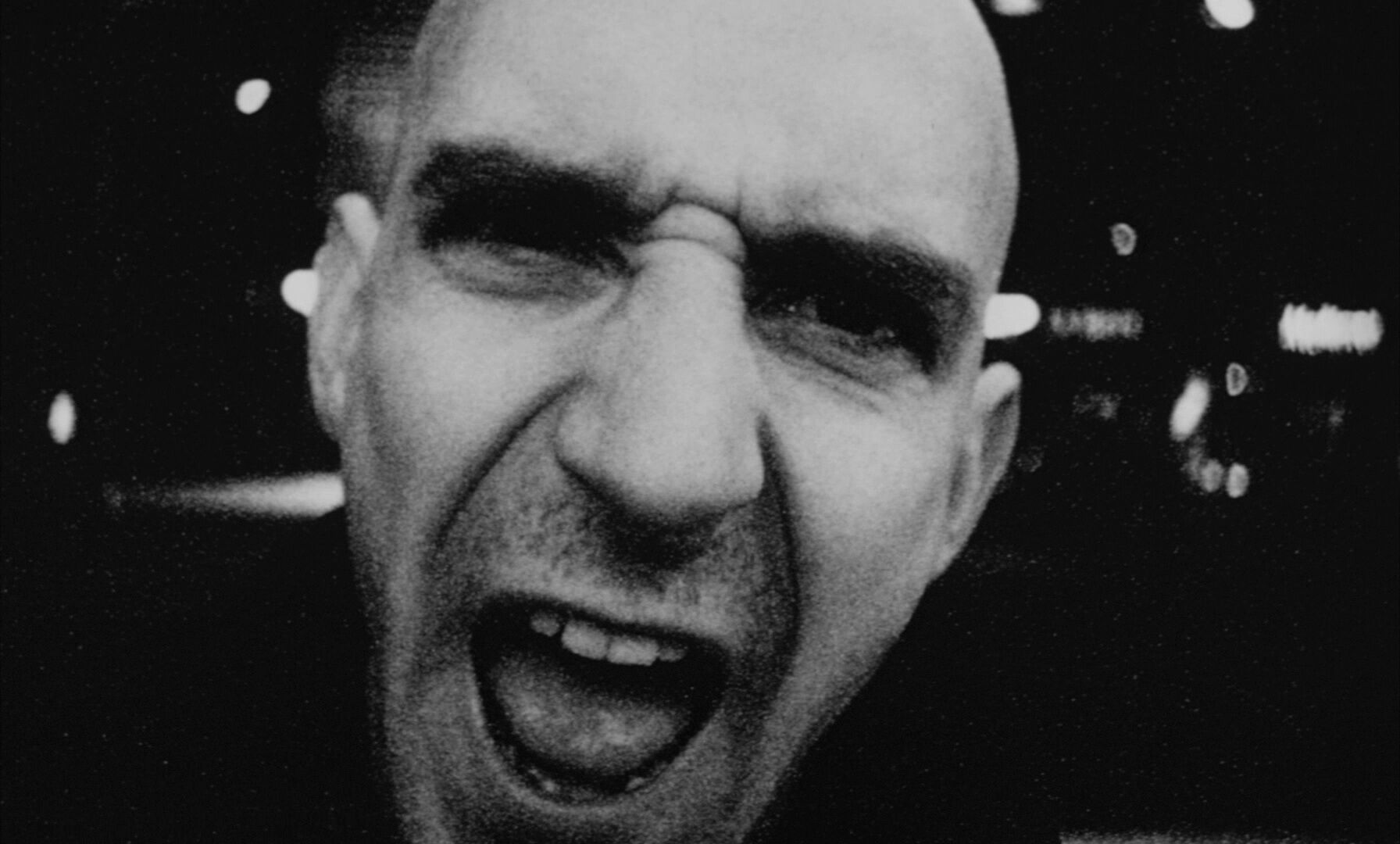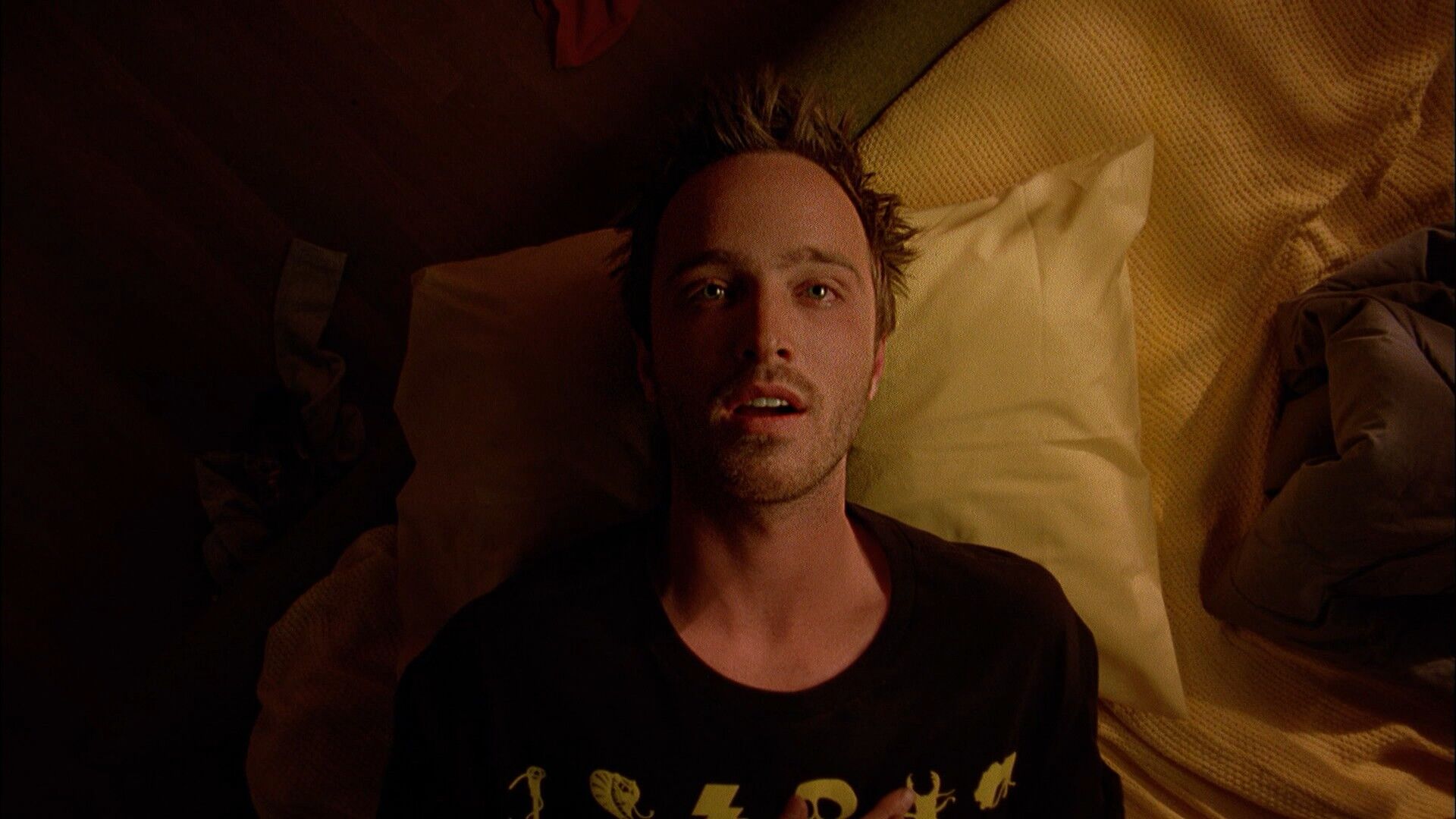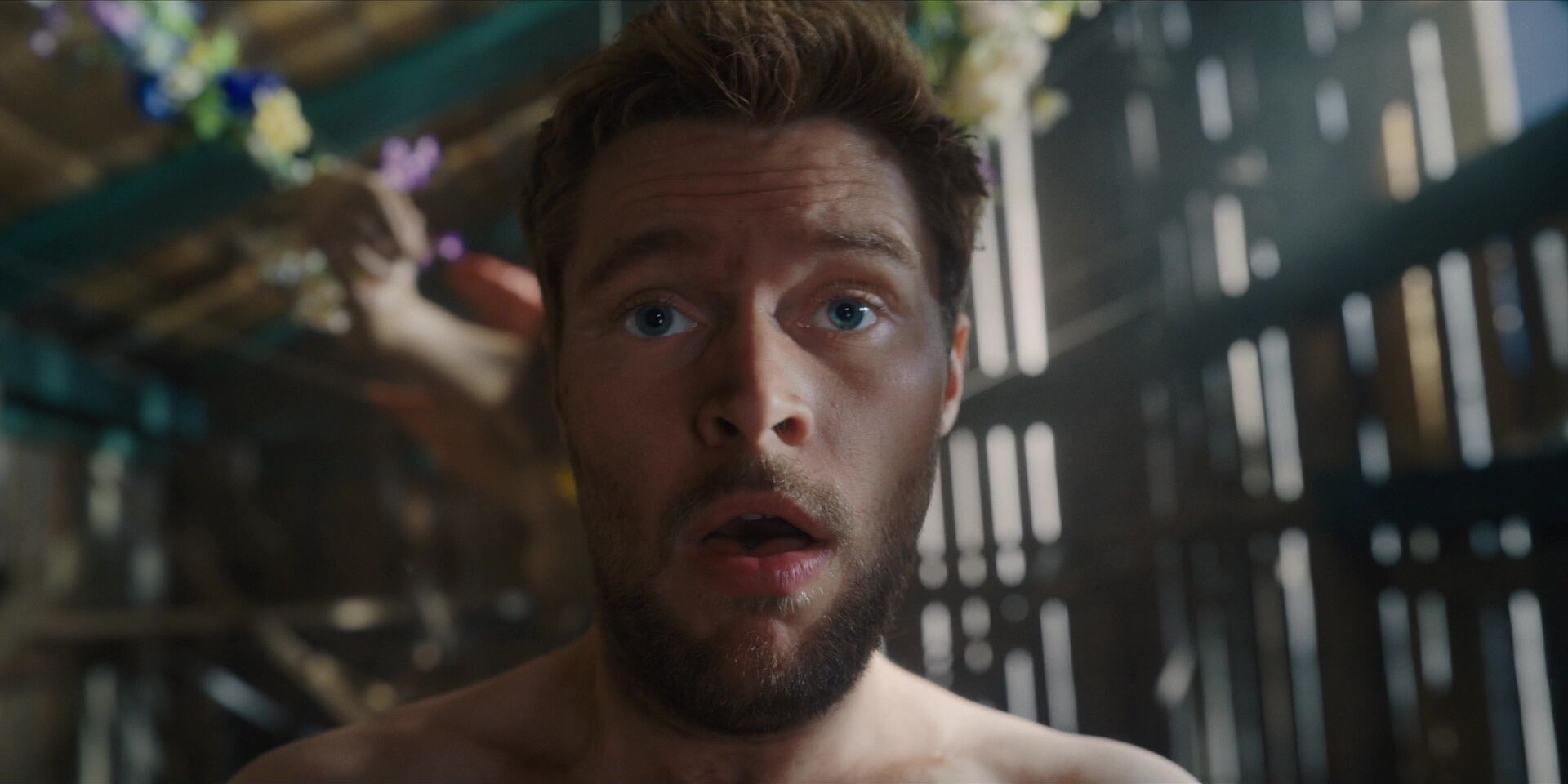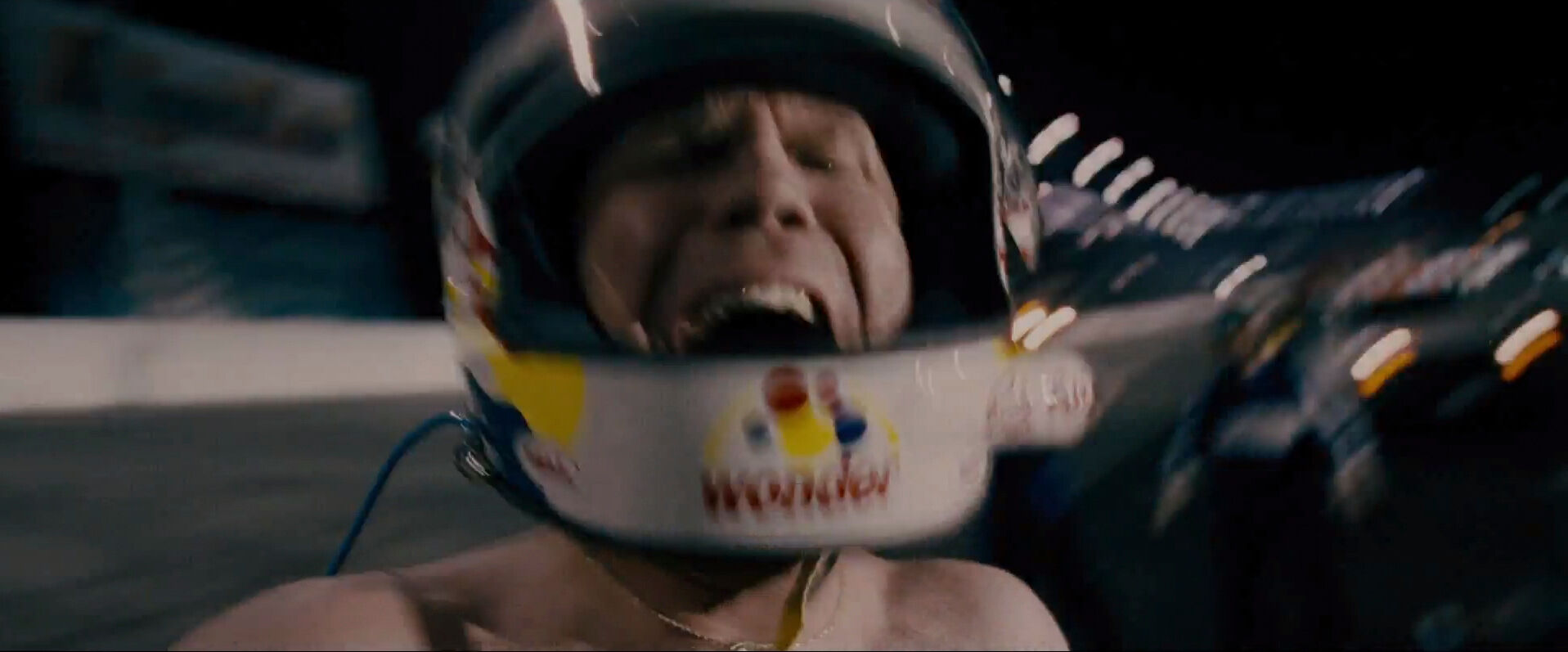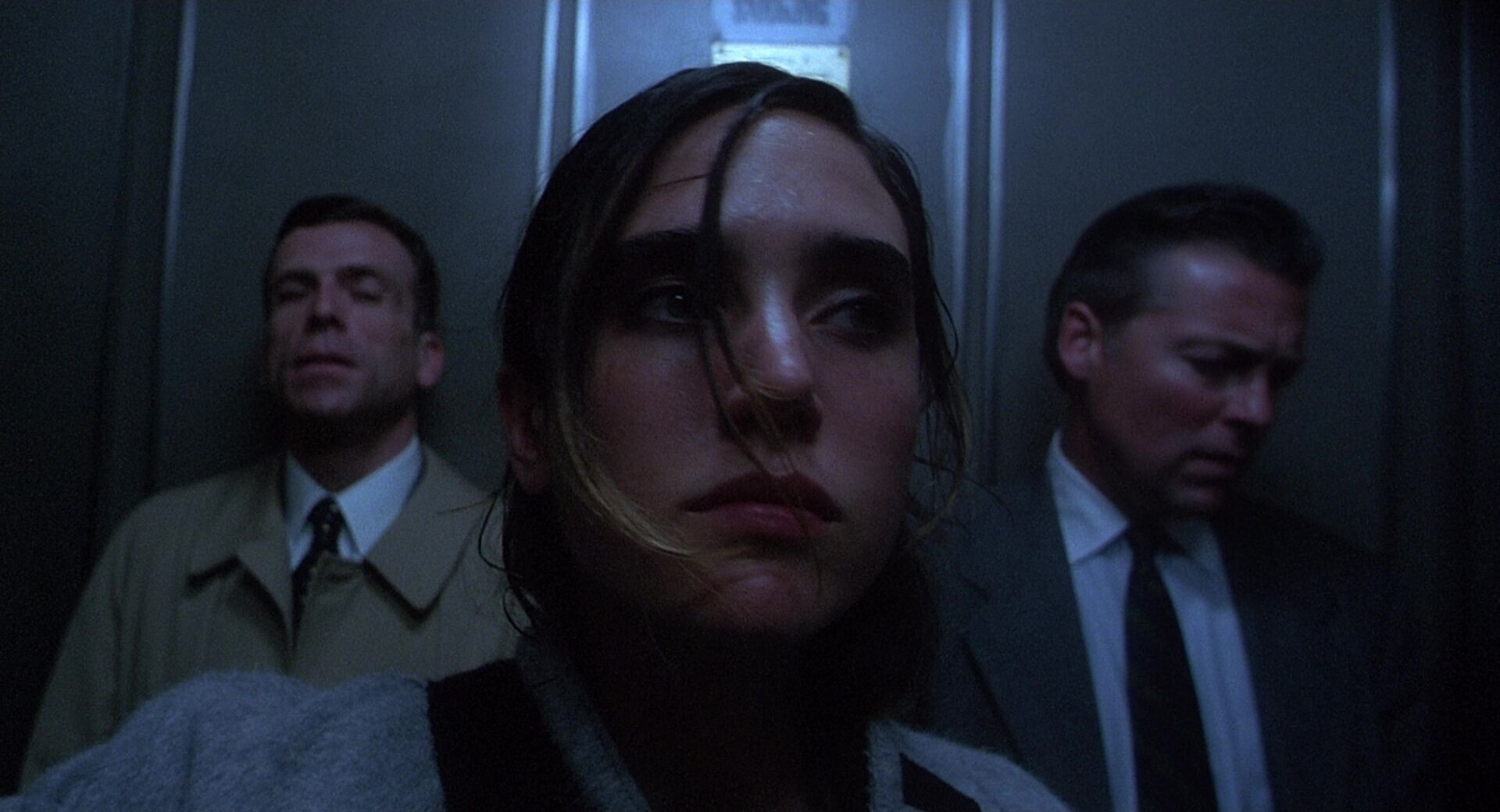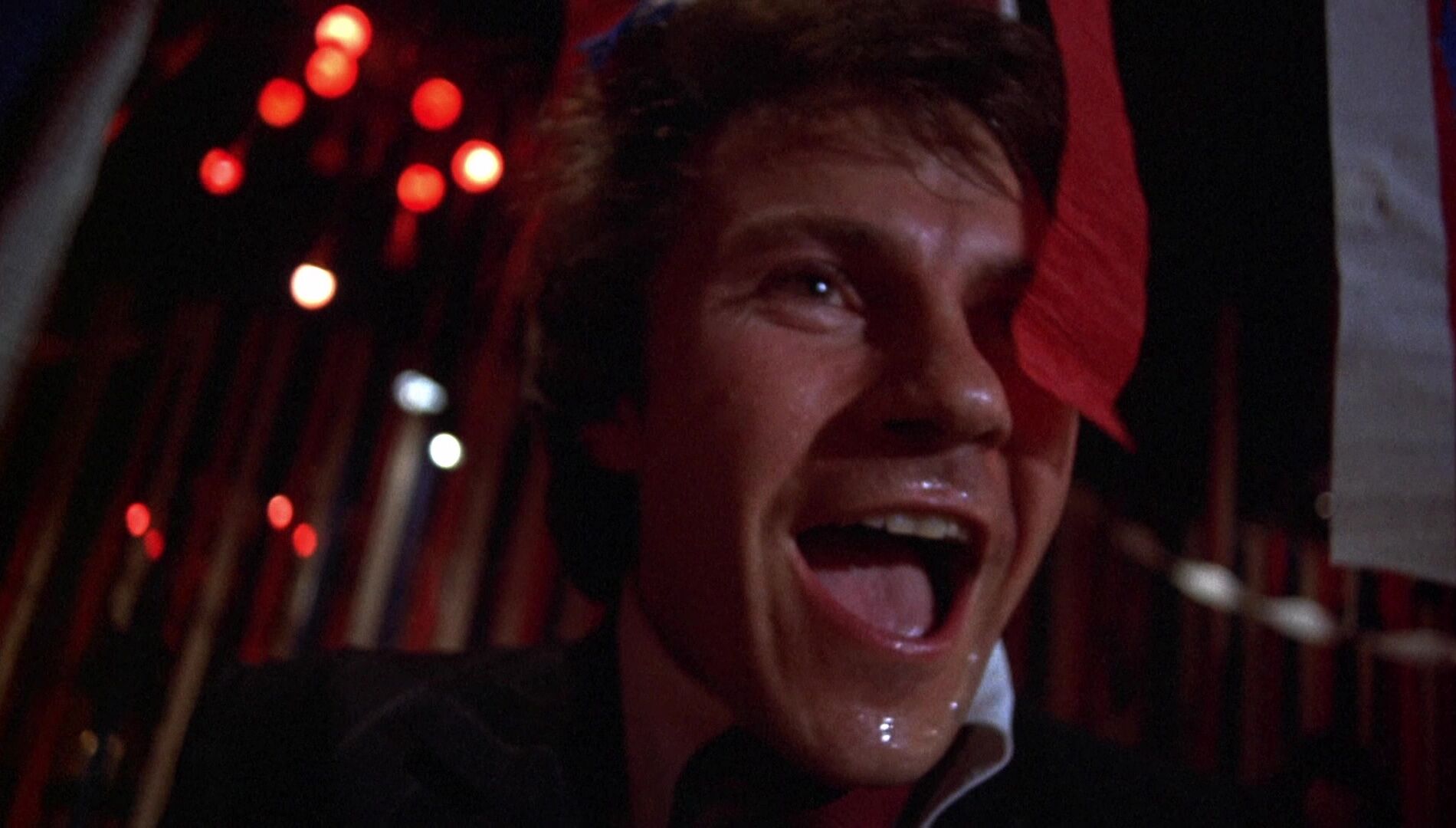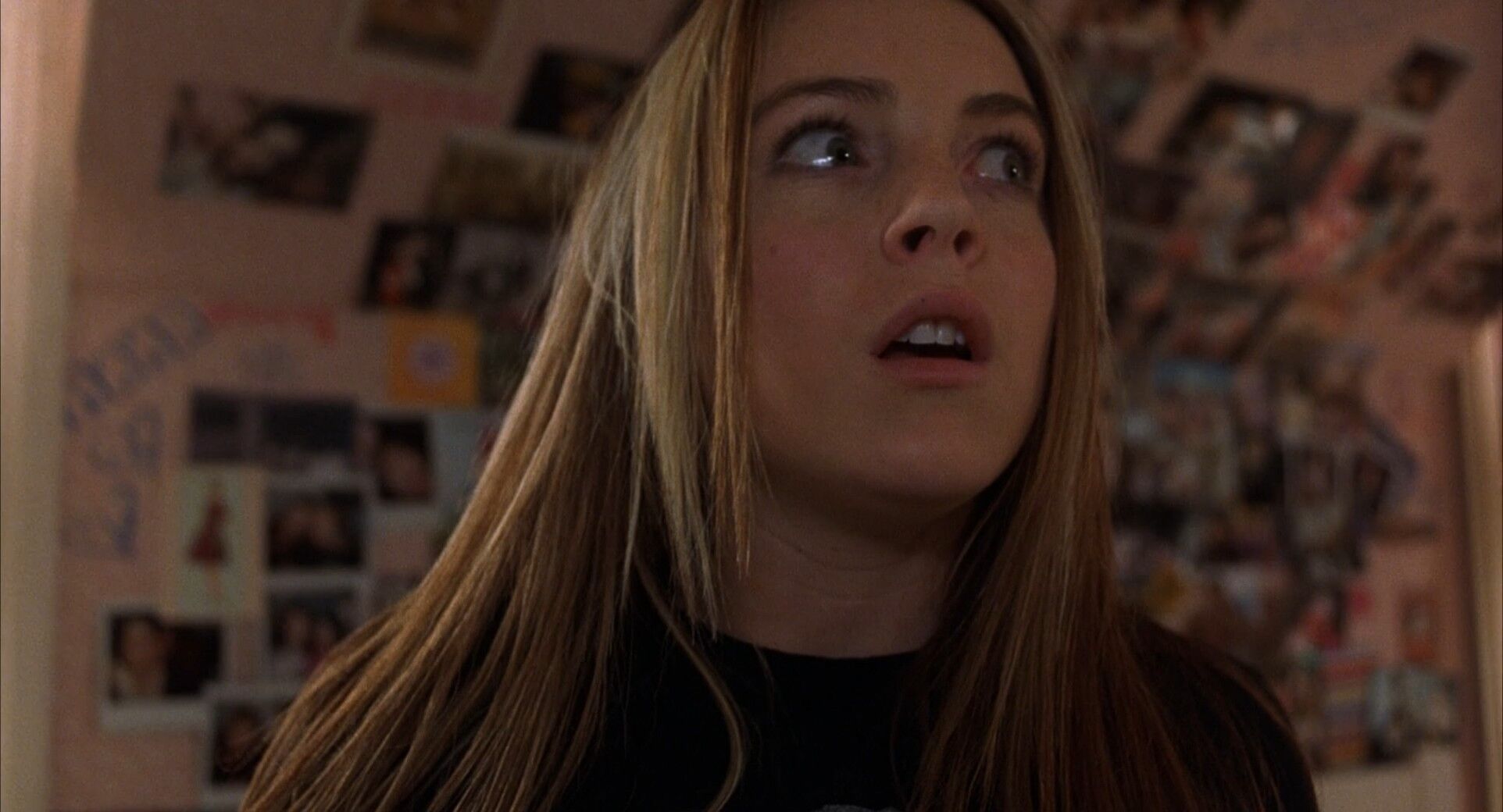home → Camera Movements → Snorricam Shot
Snorricam Shot definition
What is a Snorricam Shot?
A snorricam shot is a filming technique where the camera is actually mounted directly to the actor, usually on their torso. The resulting shot shows the actor’s face in the frame, and allows the camera to move with them as they move through a scene. The audience is directed to focus on the actor’s face, but can also perceive the background of whatever they’re physically moving through. The visual effect is often used for scenes where a character is going through something deeply psychological.
For an in-depth exploration of this technique, check out our full guide to Snorricam Shots, complete with examples and breakdowns.
Snorricam Shot
Snorricam Shot examples
It’s helpful to see Snorricam Shot in action before exploring how they operate within visual storytelling. Browse this curated selection of Snorricam Shot to get a sense of their uses across films.
Convey disorientation or chaos
Show the character’s emotions
Give a new visual POV
Show a psychological moment
Uses
What does a Snorricam Shot do?
Snorricam Shots allow the audience to feel physically connected to the character’s experience. For this reason, they’re often used in story moments where there is intensity, chaos, or psychological changes.
Convey chaos
While the actor’s face is locked in frame during a Snorricam shot, the moving background can make the viewer feel off-balance, which helps emphasize the character feeling disoriented.
Show emotional turmoil
Since a Snorricam shot shows the actor's face locked in the frame, it can be used to highlight intense emotions like panic or fear. For this reason, it’s often used in the horror genre.
Crank up the intensity
This immersive shot is a unique way to visually convey moments of emotional intensity for a character.
Show a character’s state of mind
Since this immersive shot moves with a character and focuses keenly on their facial expressions, it helps the audience feel connected to them and what they are going through in the story.
Snorricam Shot Examples
Snorricam Shot vs Close-Up Shot
A snorricam shot is a shot that keeps tight to an actor’s face. This may sound similar to a close-up, and it is, but there are key differences. A Snorricam shot involves the camera being physically fixed to the actor’s body. Their face stays centered in frame while the background moves as they do.
A close-up focuses the shot on the actor’s face to capture their expressions, but the camera itself is not attached to the actor. In general, Snorricam shots are used to create a sense of chaos, panic, or desperation, while close-ups are used during intense emotional scenes, whether that be the character feeling love, anger, or fear.
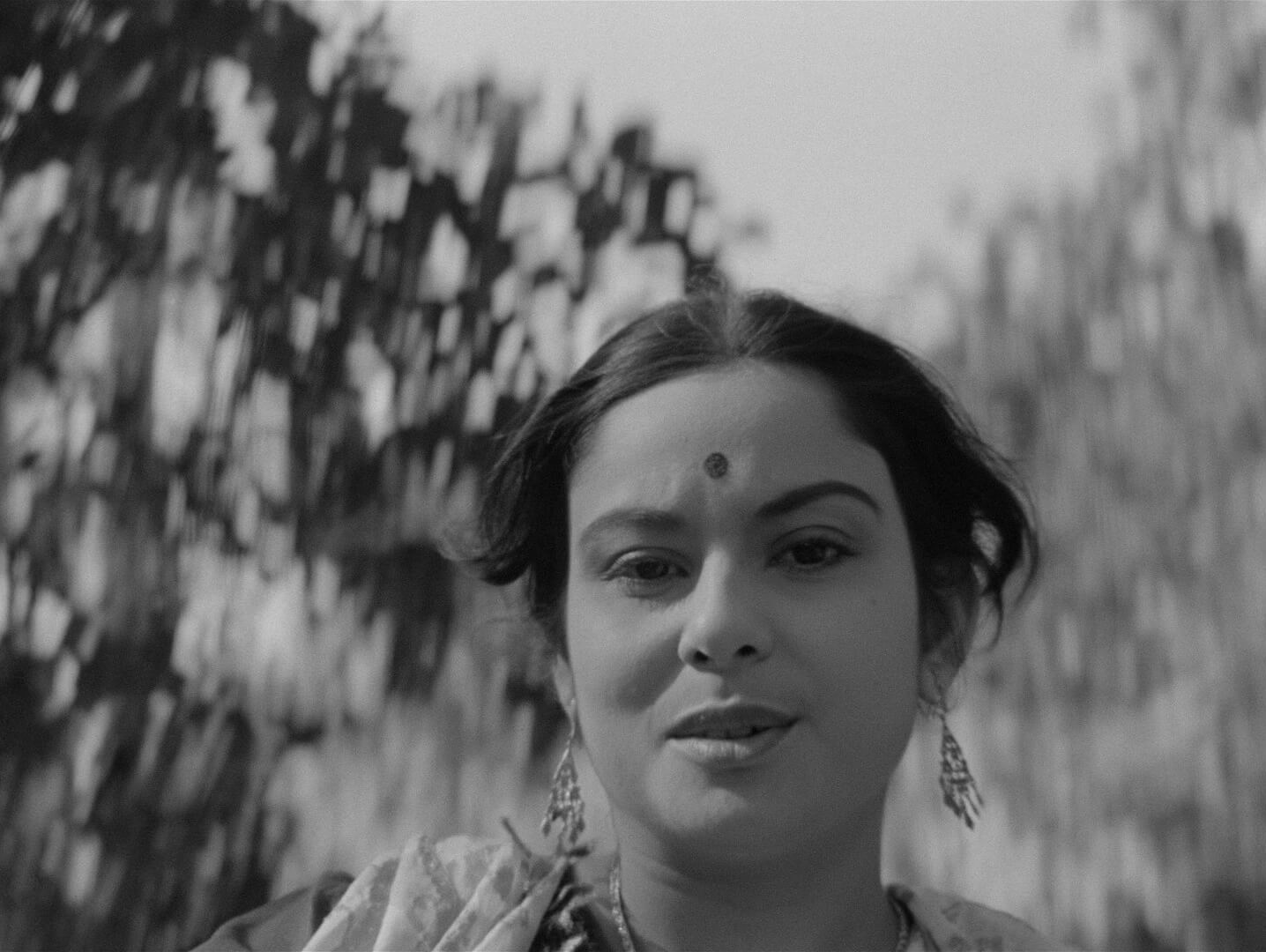
Case Study
Shot listing a Snorricam Shot
In a key scene from Jennifer Kent’s The Babadook, the camera is rigged directly to the main character’s chest. This Snoricam shot keeps her face in the center of the frame while she moves, creating a dizzying, frantic effect that helps create suspense as she suspects the presence of something supernatural.
Click the shot list below to take a closer look at the entire scene.
Snorricam Shots are a great way to focus the audience on a character who is experiencing something intense, and when combined with other camera techniques, they can really emphasize the frantic nature of a moment.
Unexpected combos
How can you use a Snorricam Shot with other camera techniques?
How to combine a Snorricam Shot
Snorricam Shots are a versatile addition to any filmmaker’s visual language. While impactful on their own, they gain even more power when paired with other techniques. Here are some creative ways Snorricam Shots can be combined with different cinematic approaches:
- Wide shot: A snorricam shot can be used after a wide shot to establish the environment around the actor before tightening in on their face with the snorricam.
- POV shot: Snorricam shots can be used in contrast with a POV shot to show what the character feels and experiences, versus what they’re actually seeing.
- Handheld shot: This shot can be used before or after with a snorricam shot to evoke even more of that shaky, chaotic feeling.
- Over-the-shoulder shot: This shot can help show interaction with other characters around the snorricam’s focused frame.
- Tracking shot: Snorricam shots are often preceded by a tracking shot, showing the actor’s movement from a distance before switching to the highly localized snorricam shot.
- Close-up: A Snorricam shot with a close-up can be used to really focus in on the actor’s facial expressions.
Frequently asked questions about the Snorricam Shot
A snorricam shot is when the camera is rigged directly to the actor’s body, which keeps their face centered in frame while background action goes on around them.
The shot is named after its inventors, Norwegian filmmakers Einar Snorri and Eiður Snorri.
A snorricam rig is a harness that is attached to the actor to allow the camera to move as they move.
Using a snorricam shot creates a frantic, disoriented effect. It’s often used for moments when a character is panicking or in distress.
A camera rig is mounted directly on the actor’s torso, and the camera then films them as they move, while keeping the camera focused on their face.
